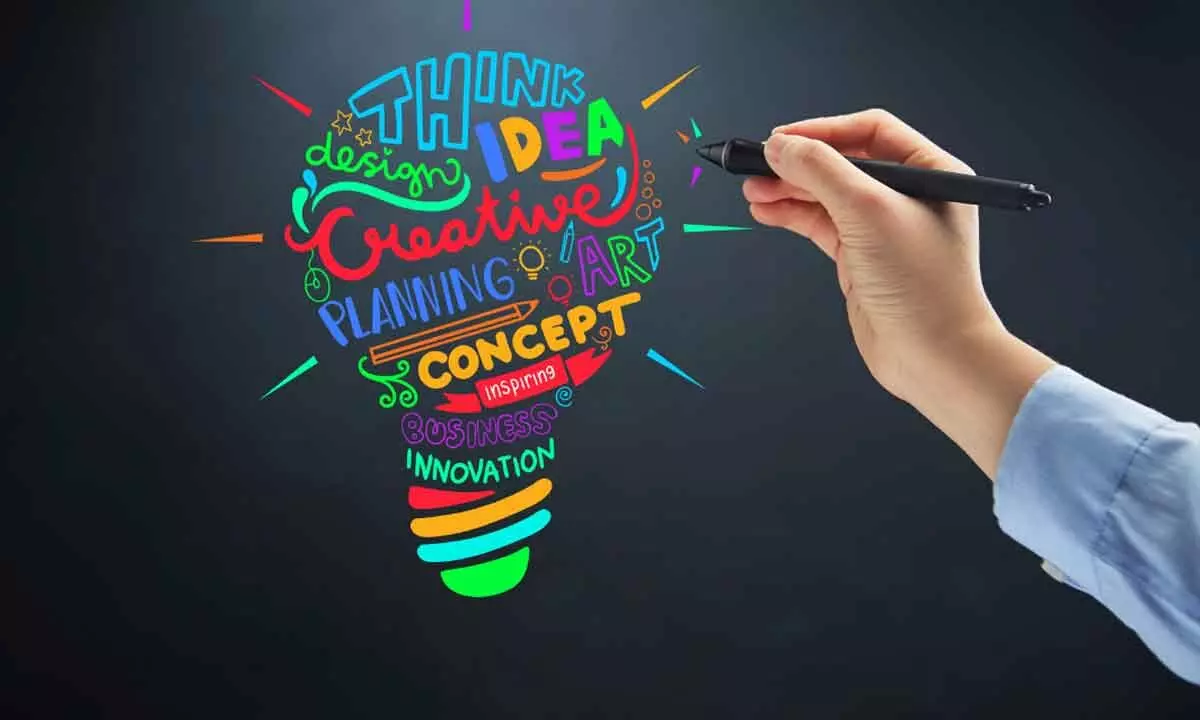Live
- They always want me to win, and now I feel lucky to have been offered a story like ‘Zebra’: Satyadev Kancharana
- ‘Democracy first, humanity first’: PM Modi in Guyana's parliament on two countries' similarities
- PKL Season 11: Telugu Titans register third straight win to top standings
- Is Pollution Contributing to Your COPD?
- NASA Unveils Underwater Robots for Exploring Jupiter's Moons
- Additional Central forces arrive in violence-hit Manipur
- AR Rahman and Saira Banu’s Divorce: Legal Insights into Common Issues in Bollywood Marriages
- 82.7 pc work completed in HPCL Rajasthan Refinery area: official
- Curfew relaxation extended in 5 Manipur districts on Friday
- Tab scam prompts Bengal govt to adopt caution over fund disbursement
Just In
Importance of creativity in academic landscape


New Delhi: In an age marked by rapid technological advancements and a constant need for innovation, creativity has become an essential skill for...
New Delhi: In an age marked by rapid technological advancements and a constant need for innovation, creativity has become an essential skill for students to stand out from the crowd. More so, in light of the growing influence of artificial intelligence (AI) in replacing humans, however, even AI faces an inherent limitation of replicating human creativity. Therefore, the term “Creative Quotient” or “CQ”, which refers to an individual’s capacity to think creatively and solve complex problems, is gaining momentum. So, given that creativity is the fundamental element of human intelligence, the introduction of Ed-tech platforms has opened up new possibilities for students to unleash their creative potential and boost their Creative Quotient score.
Importance of creativity in academic landscape
Creativity is frequently associated with artistic professions, such as writers, dancers, painters, and musicians, but its relevance extends far beyond the arts. However, in today’s scenario, the business world also recognises the pivotal role of creative thinking in accelerating growth. It is widely known that learning while engaging one’s creative side leads to enhanced retention of conceptual and factual knowledge. This creativity then often translates into ‘out-of-the-box thinking’, leading to the discovery of unexplored solutions.
The Creative Quotient assesses an individual’s level of creative intelligence. Measuring creativity is achieved through a CQ test, which comprises various exercises based on different metrics, such as abstraction, connection, perspective, curiosity, boldness, paradox, complexity, and persistence. These tests categorise individuals based on their creative abilities, ranging from highly creative to not creative at all. Therefore, Ed-tech platforms have emerged as a catalyst for bridging this gap between traditional pedagogy and the needs of the modern world. They offer an array of tools that facilitate the development of creative thinking, ultimately enhancing the creative side of the students.
Creativity-enhancing Tools: These platforms offer various tools that students can use to express their creativity, for example, graphic design software, video editing tools, and programming interfaces. These creative outlets empower students to explore multiple fields, such as content creation, coding, or design projects while building technical skills at the same time.Gamified Learning: Gamification is a concept that aims to make learning more engaging and enjoyable. By incorporating competitive elements such as points, leader boards, and rewards into the learning process, students are motivated to participate actively and think innovatively.
This approach fosters a sense of achievement, which can boost students’ confidence and enthusiasm for learning.Collaborative Environment: Various collaborative tools offered by learning platforms enable students to work on group projects, share ideas, and engage in discussions with peers from different backgrounds. Such settings not only promote creativity but also improve communication skills, which are crucial for effectively expressing original ideas.Adaptive Learning: The power of AI goes hand-in-hand with creating personalised learning experiences for students; eg. algorithms can analyse each student’s preferences and tailor the content and assignments to their individual needs.
This personalisation ensures that students are neither overwhelmed nor bored with academic content. This way, students can explore new subjects at their own pace, promoting independent thinking.Real-world Problem Solving: Incorporating real-world scenarios and simulations into the learning process allows students to autonomously apply their knowledge to practical situations. Solving such problems encourages self-induced creativity, which leads to coming up with out-of-the-box solutions.
The development of students’ Creative Quotient is crucial for preparing them to thrive in an ever-evolving world. Ed-tech platforms, with their tools and strategies, empower students to think creatively, adapt to new challenges, and make meaningful contributions to society. As the academic environment continues to evolve, it holds the promise of unlocking even more of the creative potential within every student.
(The author is Managing Director of Aasoka & MBD Group)

© 2024 Hyderabad Media House Limited/The Hans India. All rights reserved. Powered by hocalwire.com






